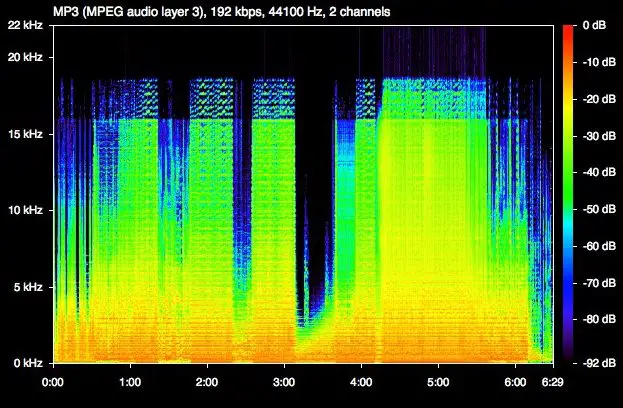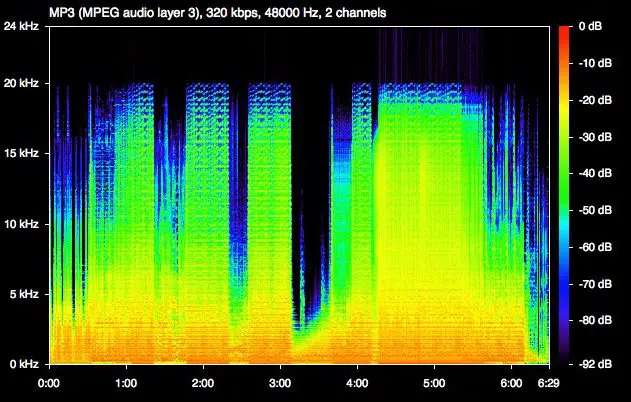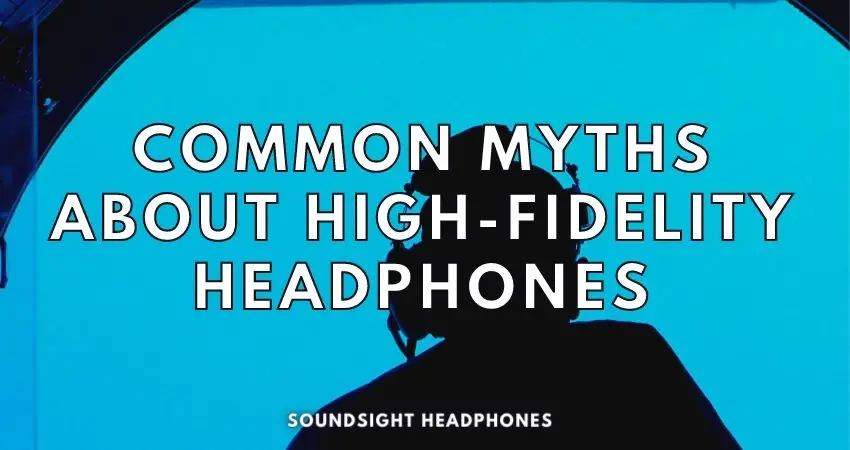The internet and word of mouth are rife with a number of myths about high-fidelity headphones. Some people believe that audiophile headphones are too expensive to acquire simply because they cater to a sophisticated audience, while others assume that they’re not worth the trouble because they don’t work well with portable music players.
This article dispels the most common myths about hi-fi headphones to make buying them less confusing and to help you get rid of the unnecessary worries associated with them.
- High-fidelity headphones require a good amplifier
- Hi-Fi headphones cost more than other headphones
- You cannot find a cheap good-sounding pair of high-fidelity headphones
- Only snobby and pretentious people buy high-fidelity headphones
- You need Hi-Res music files for high-fidelity headphones
- High-fidelity headphones are boring and lack punchy bass.
- Conclusion
High-fidelity headphones require a good amplifier
The first concern with high-fidelity headphones is the requirement for a costly amplifier to achieve the full Hi-Fi experience. While some power-hungry audiophile headphones like the Sennheiser HD 820 require an amplifier, not all headphones, including audiophile headphones and cheap in-ear monitors, do.
Almost all audio amplifiers provide more than enough power and are best suited for bookshelf speakers and studio monitors. A decent headphone amplifier that powers a Sennheiser HD 660 S or AKG K712 Pro won’t cost more than $100. Sometimes a $50 AMP will do the trick.
Even some of the most expensive audiophile headphones, such as the Sony MDR-Z1R and Denon AH-D9200, can be plugged directly into a music player without an amplifier – and the results won't disappoint. You can use most hi-fi headphones without additional equipment: a music player, DAC and/or amplifier, although an amplifier can enhance their sound.
Hi-Fi headphones cost more than other headphones
More high-fidelity headphones are on the higher end of the price range, leading people to believe that all audiophile headphones are expensive. In fact, there are high-fidelity headphones that are relatively affordable, and many audiophiles have owned a number of models over the years. Read more about the reasons Hi-Fi headphones are so costly and what makes them extraordinary.
There’s always that set of high-end audiophile headphones that cost more than a regular pair of headphones. But in a comparison between similarly priced headphones and high-fidelity headphones, the latter stand out, offering a much more vivid and detailed music listening experience.
Take any pair of Skullcandy, JBL, Beats, Raycon, Bose, gaming headsets or headphones from less popular brands, and you’ll find that they all pale in comparison to good quality audiophile headphones. Many people buy unknown brands of headphones that have thousands of reviews, are well marketed and have good specs, only to return them a week later. Headphones from these companies simply don’t live up to the promised quality.

You cannot find a cheap good-sounding pair of high-fidelity headphones
It is completely wrong to assume that all high-quality audiophile headphones are expensive. Not only are there affordable hi-fi headphones that sound good, but there are also a number of bargains if you know where to look.
Most people stop distinguishing sound improvements from high-fidelity headphones past a certain price point or just experience a slight tonality variation and don’t find it to be worth the extra cash.
Diminishing returns in sound and price begin around the $300 – $500 price range. Thus, you can find plenty of good hi-fi headphones for less than this price, but many people aren’t willing to forgo a neatly designed wooden headphone like Denon AH-D5200.
If you don’t want to compromise sound quality and craftsmanship, these affordable hi-fi headphones are your best bet. In addition to the golden rule to buy for headphones based on their value, you can also learn how to buy audiophile headphones without spending a fortune.
Only snobby and pretentious people buy high-fidelity headphones
There is some truth to the notion that high-fidelity headphones are used mainly by people who are well-versed in audio. Some of these people seek the best audio equipment and have made it their journey to find their endgame headphone or audio system. In doing so, they forget to keep an open ear and start enjoying music again from time to time as they used to do.
Because of this phenomenon of finding the best audio gear, audiophiles have become quite snobby, which has prompted some to refer to high-fidelity headphones as headphones for pretentious people.
High-fidelity headphones are no longer exclusive to audiophiles, either – casual listeners can enjoy them just as much. As high-fidelity headphones become more popular, it has enabled people to enjoy good sound quality by themselves without paying for popular feature-packed headphones with wireless technology and other sound enhancements that they’re not going to use anyway.
You need Hi-Res music files for high-fidelity headphones
High-fidelity headphones work best with specific music genres and require high-resolution audio files for the best experience. However, the quality improvement after a certain resolution is so minimal that it shouldn’t affect the listening experience for most people.
The biggest difference becomes noticeable when comparing the 64 Kbps and 192 Kbps audio files, which suggests a quality increase in terms of sound fidelity. 192 Kbps is the minimum bit-rate compression to make music not sound as incomplete, distorted and monotonic as 64 or 96 Kbps.
Files of 320 Kbps are the optimal bit rate for a high-fidelity experience. Beyond 320 Kbps, it becomes increasingly impossible for the human ear to tell the difference, and the bit rate only increases the file size. The reason 320 Kbps MP3 files are the sweet spot is because they add enough auditory information and provide a more complete and smooth sound reproduction, as you can see below.


In a Linustechtips thread, user Volbet points out that no significantly perceptible sound quality difference is discerned when going from 192 Kbps to 320 Kbps, even if 320 Kbps audio files have a later high-frequency cutoff.
Volbeat’s last message is also noteworthy when it comes to determining whether an audio file is high-quality or not:
“… looking at the bitrate is only one part of the equation. Looking at how the album was mixed and mastered will yield a much better experience than just seeking out high bitrate files.”
Volbeat
Lossless encoded 24-bit/96 kHz FLAC files produce theoretical improvements through smoother cutoffs at the top end, reproducing more frequencies, albeit inaudible by the human ear, and noticeable improvements when played over home cinemas or high-end audio systems, but not headphones.
Music recorded in 32 bits/384 kHz has also been produced, but the quality is again not hearable (only measurable), and nobody can tell a difference. Also, your headphones would need a digital-to-analog converter (DAC) to play music in such a high-resolution audio format, which is not essential, especially if you have wireless hi-res headphones.

High-fidelity headphones are boring and lack punchy bass.
In a previous article, I talked about the quality of bass reproduction between high-fidelity headphones and regular headphones. I’ve found that claims that audiophile headphones are boring or don’t have enough bass come mainly from fans of heavily marketed consumer headphones that have overly amplified bass.
High-fidelity headphones have tight, well-controlled bass, with dynamic and accurate reproduction. Bass is important for music to translate well to the human ear, but bad bass is a nuisance. It’s true that the bass in high-fidelity headphones is less intimidating and noisy than in regular headphones, but that doesn’t mean they lack punch or that the bass reproduction is boring.
That said, high-fidelity headphones produce good bass and are not boring, but whether they suit your tastes depends on what excites your ears. That’s why I stressed the importance of understanding your exact needs, and why there is no one-size-fits-all solution for buying high-fidelity headphones.
Conclusion
High-fidelity headphones aren’t as complicated as some people think, and now that some myths surrounding them have been dispelled, you can stop wondering whether they’re worth it. Even better news is that many high-fidelity headphones are not only affordable, but great-sounding and visually appealing – such is the case with the HiFiMAN Sundara matte black open-back headphones.
